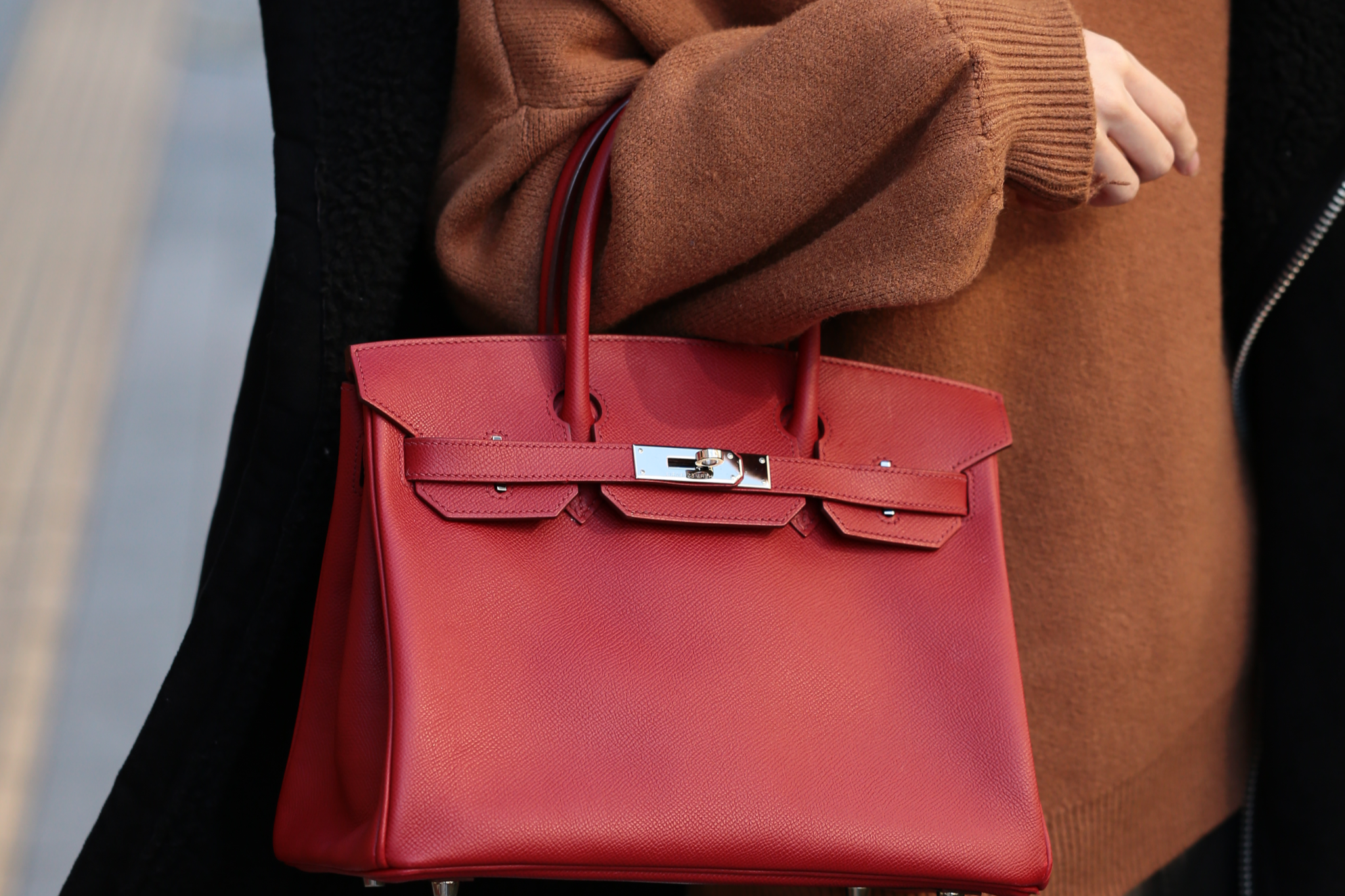Introduction
When it comes to French luxury, few names shine brighter than Hermès and Louis Vuitton. These two brands represent the pinnacle of craftsmanship, yet they couldn’t be more different.
Hermès prides itself on artisanal exclusivity, offering timeless pieces that feel like owning a piece of history.
On the other hand, Louis Vuitton thrives as a global fashion powerhouse, blending heritage with bold, modern designs.
So, which brand is truly worth your investment? In this article, we’ll dive into their fascinating rivalry, from their rich histories to market dominance.
We’ll also cover practical factors like pricing, availability, and long-term value retention.
Whether you’re a seasoned collector or shopping for your first luxury handbag, this guide will help you make an informed choice. Let’s get started!
Historical Foundations
The Origins of Hermès: Equestrian Craftsmanship (1837–Present)
Hermès began in 1837 when Thierry Hermès opened a harness workshop in Paris, catering to European nobility. His focus was on creating impeccably crafted horse saddles and bridles—a dedication to quality and functionality that still defines the brand today.
Over time, Hermès expanded its expertise beyond equestrian goods. The Sac à Dépêches, later renamed the Kelly bag in 1956 after Grace Kelly, became an instant icon of understated elegance.
Then came the Birkin bag in 1984, inspired by actress Jane Birkin’s desire for a practical yet luxurious handbag. Both designs remain symbols of exclusivity and timeless sophistication, often passed down through generations.
Louis Vuitton’s Evolution: From Luggage to Iconic Fashion (1854–Present)
Louis Vuitton’s journey began in 1854 with a revolutionary idea: flat-top, stackable trunks. These trunks, crafted with waterproof canvas and reinforced edges, were a game-changer for travel.
The launch of the Damier canvas in 1888 further solidified Louis Vuitton’s reputation for innovative luggage design.
Fast forward to the 20th century, and Louis Vuitton became part of the LVMH conglomerate in 1987, fueling its global expansion.
The 1997 debut of ready-to-wear collections under Marc Jacobs transformed the brand from a luggage specialist into a full-fledged fashion icon, blending its heritage with bold modernity.
From Hermès’ artisanal roots to Louis Vuitton’s evolution into a global fashion empire, both brands have built legacies that continue to shape the world of luxury today.
Design Philosophy & Craftsmanship
When it comes to design and craftsmanship, Hermès and Louis Vuitton take very different approaches. Each brand has a philosophy that shapes its identity—and its appeal to luxury buyers.
Hermès: Artisanal Purity and Timeless Elegance
Hermès is the epitome of craftsmanship. Every bag is a masterpiece, hand-stitched by a single artisan from start to finish.
For example, crafting a Hermès Birkin can take over 18 hours! This approach ensures each piece is unique, reflecting the skill and dedication of the artisan behind it.
The brand is also known for its premium materials. From the soft, durable Togo leather to luxurious Clemence and exotic skins like crocodile or ostrich, Hermès selects only the finest.
The designs follow a timeless aesthetic—minimalist hardware, clean lines, and understated logos. Owning a Hermès bag feels less like following trends and more like investing in a piece of history.
Louis Vuitton: Merging Heritage with Modernity
Louis Vuitton, by contrast, seamlessly blends tradition with innovation. The iconic Monogram canvas, introduced in 1896, remains a symbol of heritage.
Alongside it, materials like Damier Ebene and Taurillon leather showcase the brand’s commitment to durability and functionality. Their coated canvas is particularly popular for being lightweight yet long-lasting, perfect for everyday use.
But Louis Vuitton isn’t afraid to push boundaries. Collaborations with artists like Yayoi Kusama (2023), Virgil Abloh (2018–2021), and even Supreme (2017) have brought fresh, modern twists to their classic designs. These partnerships appeal to younger audiences while keeping the brand’s legacy alive.
Choosing Between Two Icons
Hermès offers timeless elegance and exclusivity. Louis Vuitton delivers heritage with a bold, contemporary edge.
Deciding between them depends on whether you value artisanal purity or a mix of tradition and modernity. Either way, both brands prove that luxury is as much about philosophy as it is about design.
Product Ecosystem
Handbags: Comparing Flagship Models
When it comes to handbags, Hermès and Louis Vuitton dominate the luxury space, but their offerings differ significantly in price, craftsmanship, and exclusivity.
| Feature | Hermès | Louis Vuitton |
| Iconic Models | Birkin ($10K+, waitlist) | Speedy ($1.5K), Neverfull ($2K) |
| Craftsmanship | Hand-stitched, lifetime repairs | Machine-assisted with hand-finishing |
| Exclusivity | Boutique-only, limited access | Wide availability, including e-commerce |
The Hermès Birkin is a symbol of exclusivity and craftsmanship. With prices starting at $10,000 and a notorious waitlist, owning one is as much about patience as it is about money.
Each bag is meticulously hand-stitched, and Hermès offers lifetime repairs, making every piece a long-term investment. Hermès vs Louis Vuitton
In contrast, Louis Vuitton’s Speedy and Neverfull are more accessible, both in price and availability. Their machine-assisted production ensures consistency and quality, while the option to shop online or in stores makes them a more approachable choice for buyers.
Practical Buying Tips for Customers
- Hermès: Navigating the world of Hermès can feel like entering an exclusive club. To increase your chances of scoring a Birkin or Kelly, build a relationship with boutique staff. Start by purchasing smaller items, like silk scarves or home goods. This demonstrates loyalty and increases your visibility as a customer.
- Louis Vuitton: For Louis Vuitton, accessibility is key. Their flagship pieces are available online, but keep an eye on seasonal sales for limited-edition collaborations. Shopping at official stores or on the brand’s website ensures authenticity—a crucial factor in a market rife with counterfeits.
Diversification Beyond Bags
Both Hermès and Louis Vuitton extend their luxury appeal far beyond handbags, with diverse product lines that cater to every facet of life:
- Hermès: Known for its silk scarves, Hermès has expanded into home decor and fragrances, offering a lifestyle that exudes sophistication. A Hermès tableware set or signature Eau des Merveilles perfume can bring the same elegance as their handbags.
- Louis Vuitton: Louis Vuitton has embraced modernity with watches, sneakers, and even tech accessories like wireless earphones. Their ability to merge luxury with contemporary needs makes them a go-to brand for younger, fashion-forward buyers.
Brand Value & Market Positioning
Luxury Valuation and Market Dominance
When it comes to brand value, Hermès and Louis Vuitton are both powerhouses, but they dominate the market in different ways.
- Hermès is ranked #3 on Interbrand’s 2024 Luxury Index, with a staggering €38 billion brand value. Its exclusivity and artisanal craftsmanship give it unparalleled prestige. Hermès doesn’t chase trends or mass-market appeal. Instead, it focuses on timeless elegance, making it a favorite among discerning collectors and ultra-high-net-worth individuals.
- Louis Vuitton, on the other hand, is #1 in the Luxury Index, with a brand value of €75 billion—almost double that of Hermès. As part of the LVMH conglomerate, Louis Vuitton has mastered the art of balancing heritage with mass appeal. Through bold collaborations and accessible luxury pieces, it has cemented its position as the global leader in the luxury fashion market.
Understanding Consumer Demographics
The target audiences for Hermès and Louis Vuitton differ significantly, reflecting their positioning in the luxury hierarchy.
- Hermès caters to a niche group of high-net-worth individuals. Its products are seen as investments, with some collectors buying multiple Birkins and Kellys to diversify their portfolios. The exclusivity of Hermès appeals to those who value rarity and craftsmanship over brand ubiquity.
- Louis Vuitton has successfully expanded its appeal to younger, fashion-forward consumers, particularly Gen Z and Millennials. By embracing streetwear and bold collaborations—like the Supreme partnership or Virgil Abloh’s iconic designs—Louis Vuitton has become a symbol of modern luxury. This strategy has made the brand more approachable while maintaining its high-status allure.
Buying Experience & Customer Insights
Store Experience: Hermès vs. Louis Vuitton
The in-store experience at Hermès and Louis Vuitton reflects their contrasting approaches to luxury.
- Hermès offers a highly personalized and exclusivity-focused shopping experience. Entering a Hermès boutique feels like stepping into an art gallery. The staff, known for their expertise, take time to understand your preferences and guide you through the collection. However, purchasing flagship items like the Birkin or Kelly often requires building a relationship with the boutique—these bags are not openly displayed and are available only to select customers. This exclusivity enhances the allure of owning a Hermès piece.
- Louis Vuitton, in contrast, provides a more accessible luxury experience. With a global presence and diverse retail options, Louis Vuitton boutiques cater to a broader audience. While service is still tailored, the shopping process is more straightforward—most items, including iconic handbags like the Speedy and Neverfull, are readily available in stores and online. This accessibility makes Louis Vuitton appealing to first-time luxury buyers and young consumers.
Resale Potential & Investment Value
When considering luxury purchases, resale value and long-term investment potential are crucial factors—and Hermès and Louis Vuitton differ significantly in this regard.
- Hermès handbags are often described as “wearable investments.” Their value retention is unmatched, with resale rates ranging between 85% and 120% of the original price—sometimes even higher for rare or limited-edition pieces. For example, a Birkin in pristine condition can sell for more than its retail price on the secondary market. This makes Hermès an ideal choice for long-term collectors and investors.
- Louis Vuitton also holds strong resale value, though not at the level of Hermès. Resale rates for Louis Vuitton bags typically range from 50% to 70%, depending on the model and condition. While classic designs like the Neverfull and Speedy tend to retain higher value, seasonal or trend-driven pieces may depreciate faster. However, Louis Vuitton’s accessibility means there’s a larger resale market, making it easier to buy or sell pre-loved items.
Corporate Rivalry & Controversies
The LVMH-Hermès Stakeholder Battle
The rivalry between Hermès and Louis Vuitton isn’t just about competing for luxury dominance—it’s a dramatic clash of corporate philosophies, brought into sharp focus during the infamous 2010–2011 standoff.
- In 2010, LVMH, led by Bernard Arnault, discreetly acquired a 20% stake in Hermès through complex financial maneuvers. This move, widely referred to as a “hostile takeover attempt,” sparked outrage within Hermès, a family-owned business deeply committed to independence.
- The legal clashes that followed exposed a cultural divide: Hermès, valuing its artisanal heritage and control, fiercely resisted LVMH’s conglomerate-style growth strategy. In 2011, Hermès took legal action, accusing LVMH of unethical practices. Ultimately, LVMH agreed to distribute its shares to its investors in 2014, ending the saga and allowing Hermès to maintain its autonomy.
This battle underscored the tension between two opposing ideologies: Hermès’ focus on exclusivity and craftsmanship versus LVMH’s ambition for global expansion and corporate consolidation.
Ethical & Sustainability Initiatives
As global consumers demand more transparency and sustainability, both Hermès and Louis Vuitton have made strides in ethical practices—but their approaches reflect their differing priorities.
- Hermès has doubled down on its commitment to artisanal craftsmanship and sustainable sourcing. The brand aims to achieve 100% traceable leather by 2025, ensuring that every piece is ethically sourced. Additionally, Hermès invests in eco-friendly tanneries to reduce its environmental impact while maintaining its high-quality standards.
- Louis Vuitton has taken a more innovation-driven approach with its Circular Design Strategy, focusing on reducing waste and repurposing materials. The brand has incorporated recycled fabrics and leathers into its collections and launched initiatives to promote product longevity, such as repair services and upcycling programs.
Global Presence & Retail Strategy
Distribution Models and Accessibility
The global reach and distribution strategies of Hermès and Louis Vuitton reveal their differing philosophies on luxury retail.
- Hermès maintains an exclusivity-driven model with 310 boutiques worldwide. The brand does not rely on wholesale partnerships, ensuring complete control over its product availability and customer experience. Core products like the Birkin and Kelly bags are not displayed openly in stores and often require a waitlist or a trusted relationship with boutique staff. This limited distribution creates a sense of rarity and prestige, reinforcing Hermès’ position as the pinnacle of exclusivity.
- Louis Vuitton, on the other hand, embraces a more accessible luxury strategy with over 460 stores globally, including duty-free locations and seasonal pop-ups. The brand’s presence in high-traffic areas ensures wide visibility, catering to tourists and casual luxury buyers. Unlike Hermès, Louis Vuitton also leverages e-commerce extensively, with many of its flagship products available for online purchase. This distribution model allows the brand to balance exclusivity with mass appeal.
Digital Innovation in Luxury
In the digital era, both brands are exploring new technologies to stay ahead, but their approaches differ in scope and execution.
- Hermès took a cautious approach to online retail but launched its global e-commerce platform in 2024, allowing customers to purchase selected items online for the first time. The brand has also introduced NFT-based authentication for its most exclusive products, ensuring buyers receive legitimate goods while embracing blockchain technology as a tool for luxury security.
- Louis Vuitton has been a leader in digital innovation, experimenting with immersive technologies like the Metaverse and AI-driven tools. The brand has hosted virtual fashion shows and created interactive digital experiences, targeting younger, tech-savvy audiences. Additionally, Louis Vuitton has implemented AI features to enhance customer service and personalization, strengthening its connection with modern luxury consumers.
Conclusion
Key Differentiators Between Hermès and Louis Vuitton
Hermès and Louis Vuitton represent two distinct approaches to luxury, each defined by unique strengths:
- Exclusivity vs. Accessibility: Hermès thrives on scarcity and exclusivity, offering products that are hard to access and even harder to own. In contrast, Louis Vuitton dominates global markets through scale, balancing heritage with accessibility.
- Craftsmanship Models: Hermès epitomizes artisanal craftsmanship, with every product meticulously hand-stitched. Louis Vuitton employs a mix of machine-assisted production and hand-finishing, prioritizing consistency and scalability.
- Cultural Currency: Hermès is synonymous with “old money” sophistication, appealing to collectors and those who value timeless elegance. Louis Vuitton, however, is a pop-culture luxury icon, celebrated for its collaborations and trend-driven appeal.
Investment Perspective for Customers
- For Heritage: Hermès is the ultimate choice for those seeking a long-term luxury investment. The brand’s iconic handbags, like the Birkin and Kelly, retain or even exceed their original value over time, making them generational assets.
- For Trend: Louis Vuitton offers exceptional value for those drawn to limited edition pieces and collaborations. The brand’s ability to capture cultural moments ensures its products remain relevant and desirable in the short to medium term.
Future Trajectories in Luxury
- Sustainability: Both brands are making strides in eco-conscious practices. Hermès focuses on ethical sourcing, such as 100% traceable leather by 2025, while Louis Vuitton prioritizes circular design and the use of recycled materials. Sustainability will continue to play a critical role in shaping their legacies.
- Digital Luxury: Hermès is cautiously exploring digital innovation, with NFT-based authentication and its recent online sales platform. Louis Vuitton, on the other hand, leads the way with cutting-edge digital experiences, including metaverse activations and AI-driven personalization. The future of luxury lies at the intersection of tradition and technology, a balance both brands are striving to achieve.











